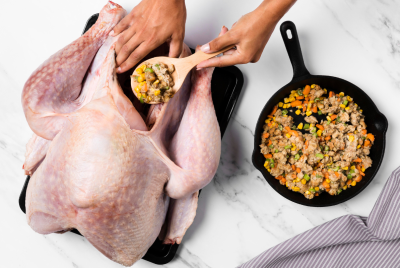Food Inflation Expected to Subside by Easter, Amidst Global Economic Stability
This optimistic forecast comes from George Weston, the CEO of Associated British Foods (ABF), a conglomerate that oversees brands like Kingsmill Bread, Twinings Tea and Silver Spoon Sugar, along with the Primark budget clothing chain.

George Weston, Chief Executive of Associated British Foods (ABF), the conglomerate that owns brands such as Kingsmill bread, Twinings tea and Silver Spoon sugar, has expressed optimism about the trajectory of food inflation.
Speaking in the context of the company's recent financial performance, which included a 25 per cent increase in pre-tax profits to £1.3 billion on the back of a 15 per cent increase in sales to £19.75 billion, Weston asserted that food price inflation, which reached 20 per cent in the previous year, is likely to fall significantly.
He predicts that food inflation will be close to zero by the end of 2024 and that inflationary pressures in the food market will be relieved by the middle of the following year, if not by Easter.
This prediction, however, is contingent on the absence of further major disruptions to the global economic system, with Weston citing the ongoing conflicts in Gaza and Ukraine as potential destabilising factors.
Weston's optimism stems from a shift in commodity prices that he has noticed. While certain commodities, such as sugar, tomatoes and onions, continue to experience inflation, essential ingredients such as cereals and edible oils have already seen price decreases.
These price cuts are expected to spread to a variety of other food products, particularly those that rely on these ingredients, such as poultry. As a result, this may act as a catalyst for a decrease in overall food inflation.
This forecast is consistent with industry data indicating a decrease in food price inflation in the United Kingdom. Food price inflation has fallen into the single digits for the first time since July 2022. According to Kantar, a consumer insights data company, grocery price inflation fell to 9.7 per cent in the four weeks leading up to October 29.
Fraser McKevitt, Head of Retail and Consumer Insight at Kantar, noted that year-on-year price decreases were confined to specific categories like butter, dried pasta and milk. Nevertheless, retailers are actively exploring strategies to mitigate the impact of price increases on consumers, with an increased emphasis on promotional activities, a trend rarely seen over the past decade.
Notably, Weston emphasised that the inflation affecting clothing costs is also abating. While sales at established Primark stores grew by 8.5 per cent in the year leading up to September 16, profits experienced a 2.8 per cent decline, partly due to an average eight per cent increase in prices. Weston attributed this pricing strategy to offset rising labour costs. Simultaneously, transportation expenses and the costs of essential materials like cotton have seen decreases.
Weston emphasised the ongoing uncertainty in consumer demand. However, he noted that recent wage increases have outpaced inflation, providing a ray of hope for many households facing a cost-of-living crisis. This indicates the worst of the crisis is over, bringing some relief to families facing financial difficulties.
Recent strong sales performance has also alleviated concerns of overstocking, diminishing the pressure for excessive discounts in the run-up to the Christmas season. Weston reported robust sales of Christmas collections, with Christmas jumpers alone seeing a 40 per cent increase in sales compared to the previous year.
Households appear to be spreading their festive spending across multiple paychecks, responding to economic uncertainties and the ongoing effects of the pandemic.
The growth prospects for Primark in the coming year look promising. The company is set to add 1 million square feet of new selling space, with approximately one-third of it earmarked for expansion in the United States, while the rest will be spread across European markets like Italy, Spain and France.
This expansion is buoyed by the demise of several major UK retail rivals, including Debenhams and Topshop, both of which have transitioned to online-only operations, leaving Primark to capture a larger share of the brick-and-mortar retail landscape.
The company, on the other hand, is dealing with an increase in the value of goods stolen from its stores. This year-on-year increase in thefts can be attributed in part to the rise of organised shoplifting gangs, an issue that has piqued the interest of other retailers such as John Lewis.
© Copyright IBTimes 2025. All rights reserved.





















